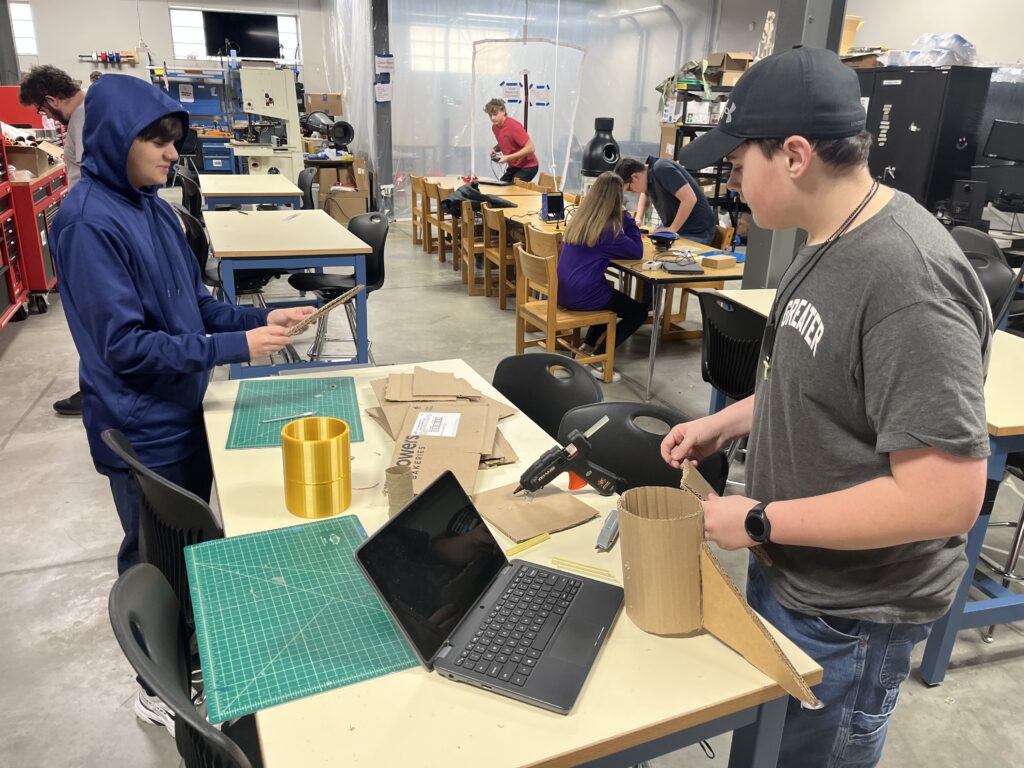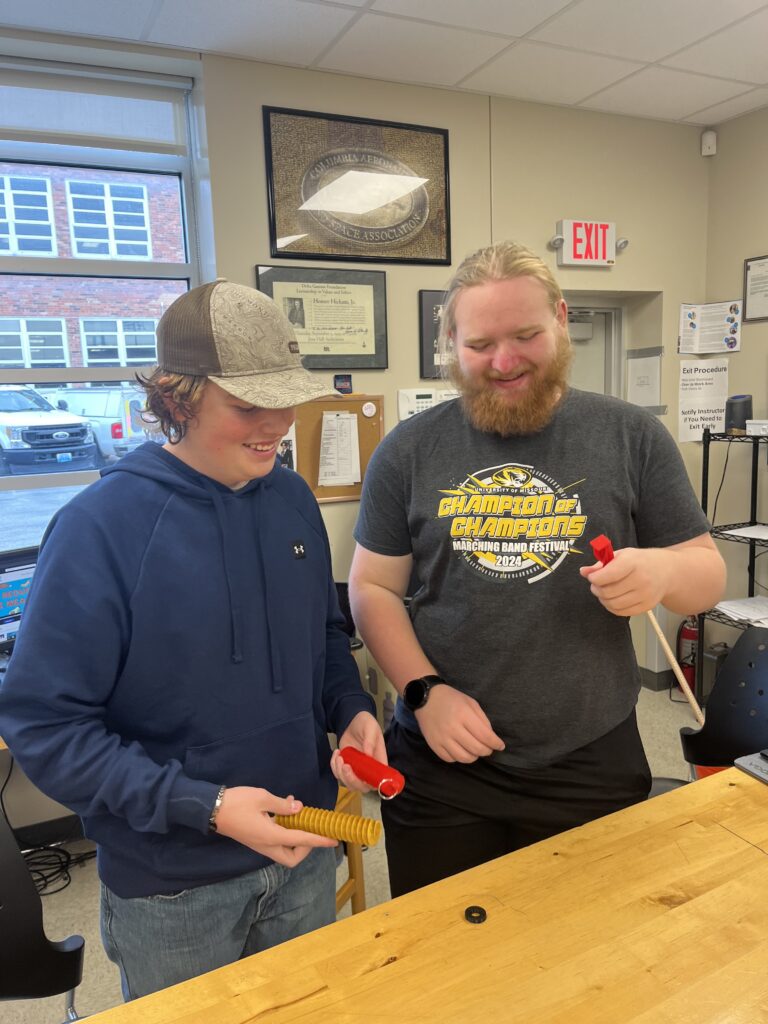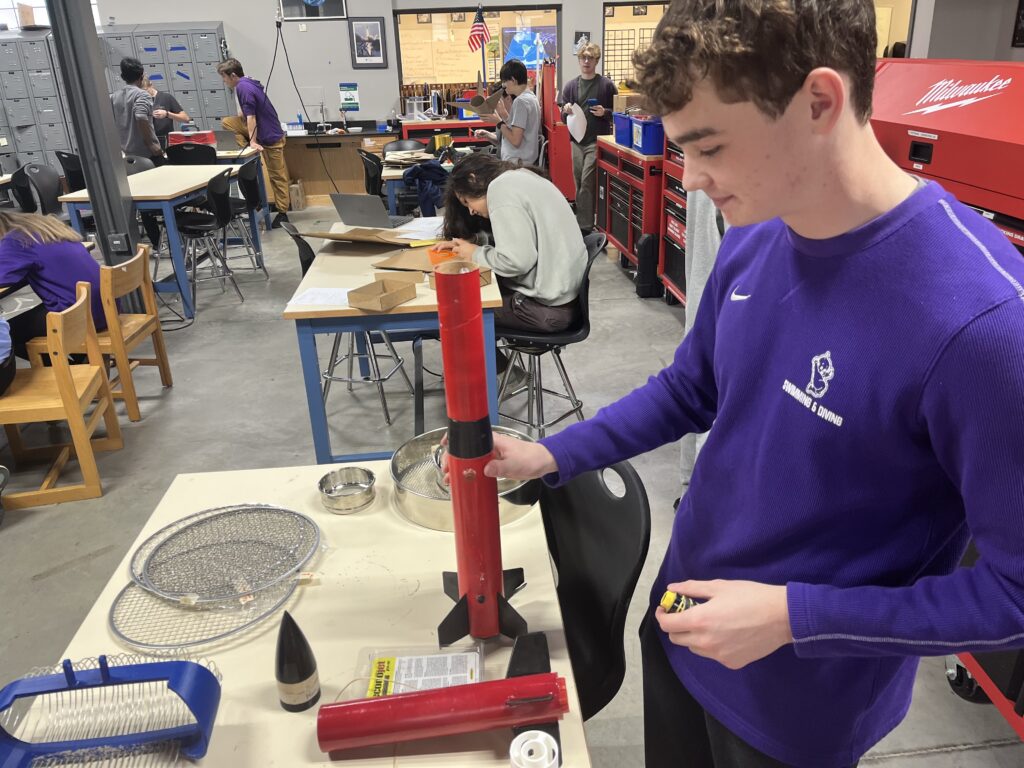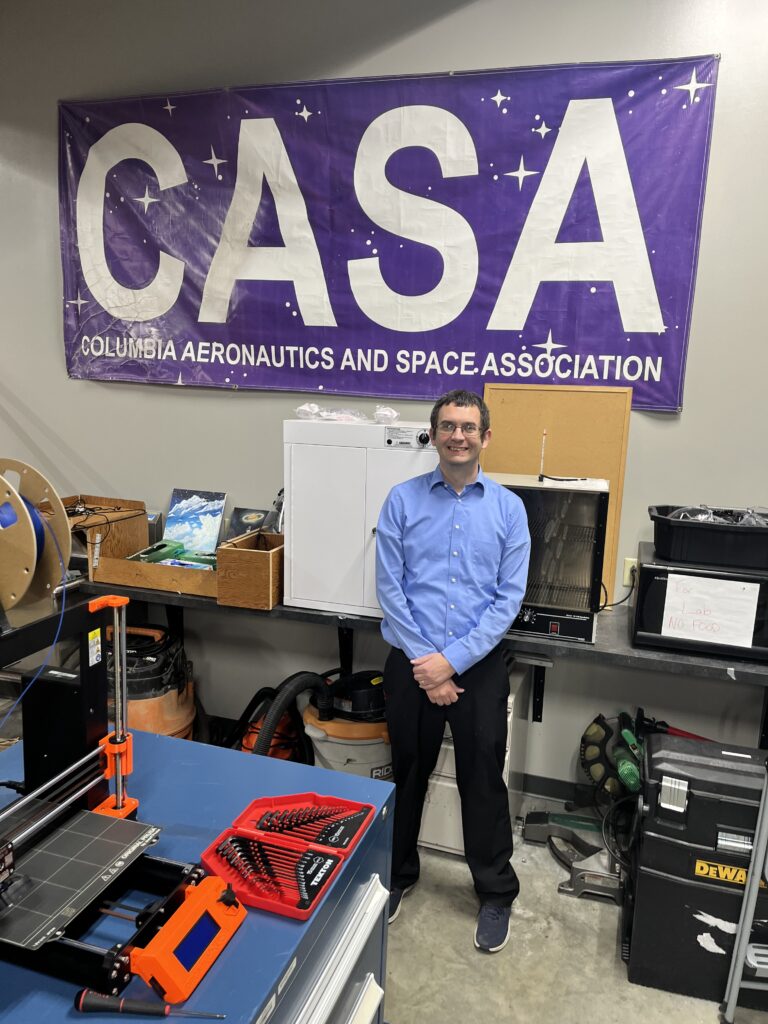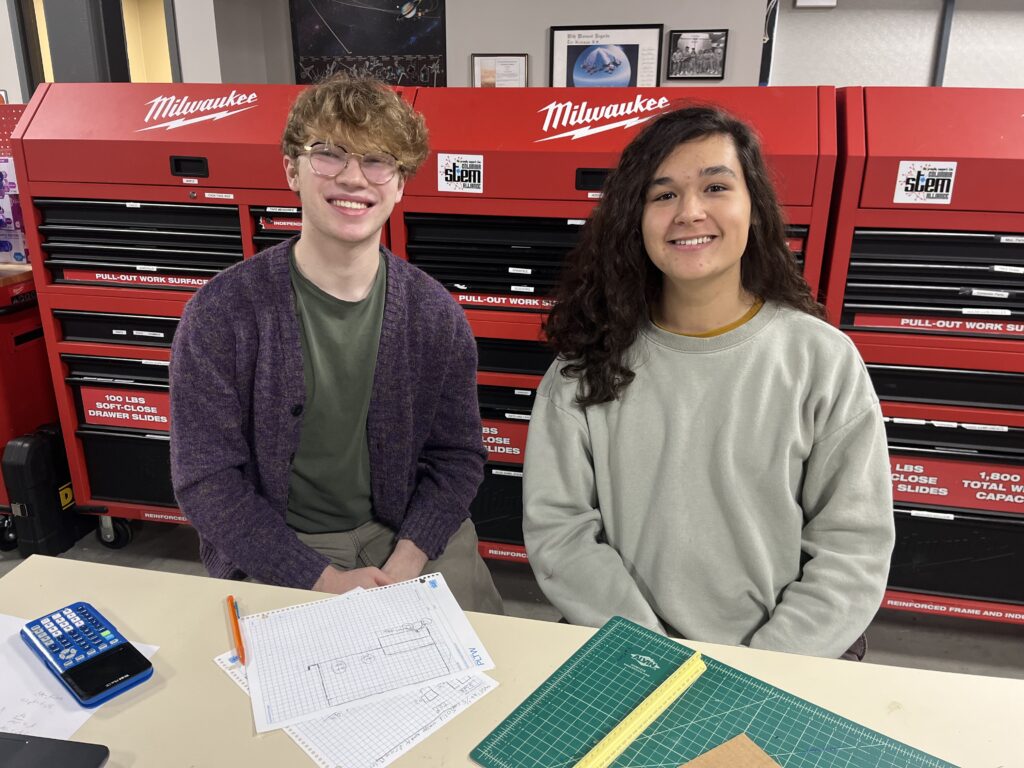
In Michael Merz’s dynamic engineering classroom at the Columbia Area Career Center (CACC), students are reaching for the stars—literally. Through the Columbia Aeronautics and Space Association (CASA), a program open to all Columbia Public Schools students, young innovators are taking on NASA-inspired challenges that push their creativity and technical skills to new heights. CASA blends hands-on learning with real-world problem-solving, providing students with the tools and support to create solutions for space exploration and beyond.
Real-World Challenges with NASA’s HUNCH Program
At the heart of CASA is its collaboration with NASA’s HUNCH (High school students United with NASA to Create Hardware) mission. This initiative empowers students to engage in Project-Based Learning by designing and fabricating prototypes for NASA’s review. The program equips students with essential 21st-century skills and offers a launchpad for careers in engineering, technology, and science.
Since the beginning of the school year, CASA students have been working diligently to design innovative prototypes. On November 13th, I visited the 9:30 AM engineering class to see their progress. The teams were wrapping up their research phase and diving into creating their first prototypes. With research resources provided by NASA, students meticulously planned their designs using tools like Fusion360 and TinkerCAD. Early models were crafted from cardboard or printed on the classroom’s Prusa 3D printers.
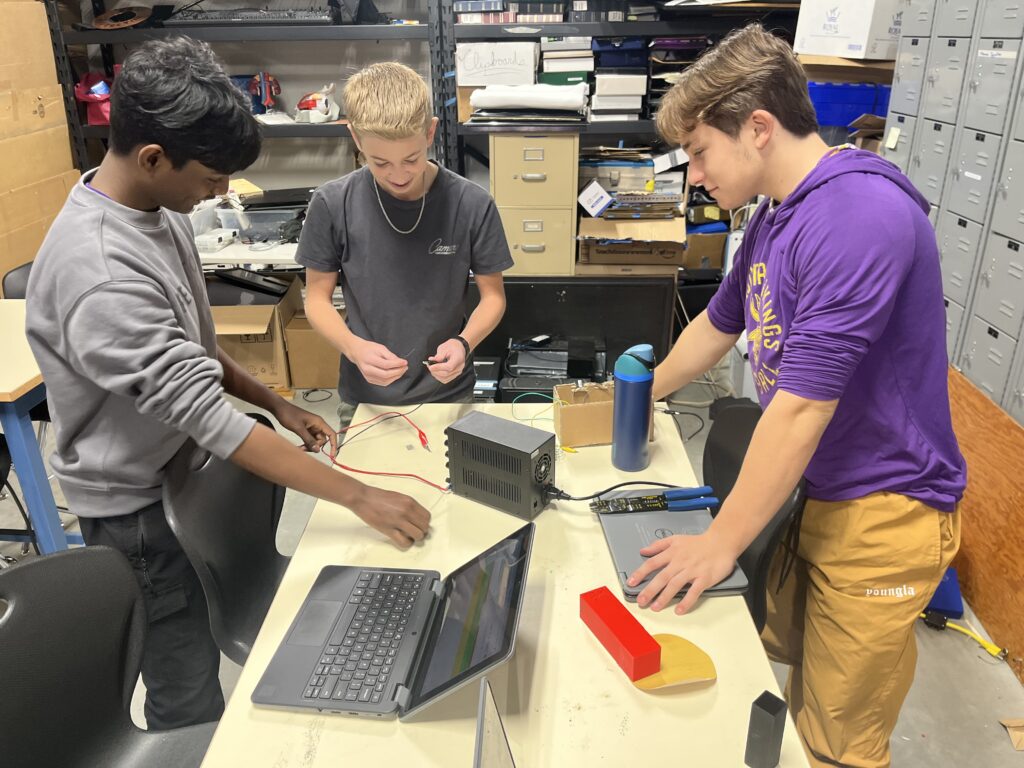

Overcoming Challenges, Innovating Solutions
As students moved into prototyping, challenges naturally arose, but they met each obstacle with resilience and creativity. Each failure became an opportunity to reflect and improve. One team designing a solar panel deployer learned the importance of power management after shorting several batteries. Another group tackling the Lunar Camper challenge wrestled with strict size constraints but gained valuable insights by consulting experts at local company HYK Outdoors.
The regolith challenge, which required simulating moon dust, spurred even more innovation. CASA students created a faux regolith recipe using concrete mix to test their designs. Adding personality to their work, one group named their lightweight lunar robot “Roly-Poly,” showcasing their creativity and humor alongside their technical expertise.
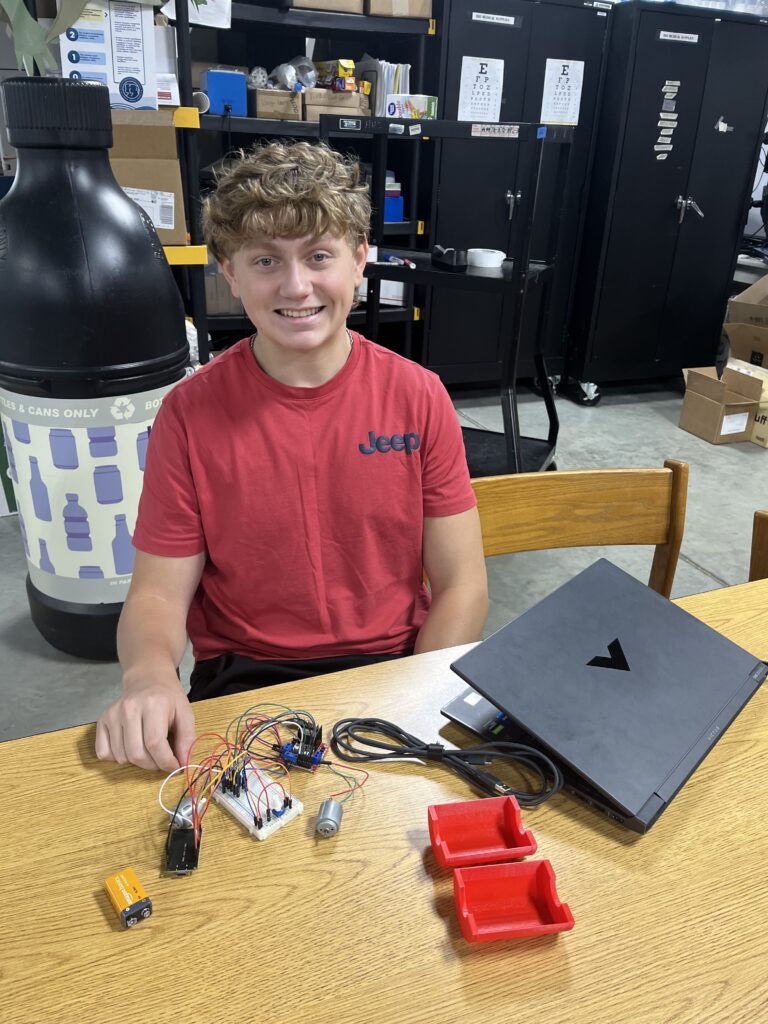
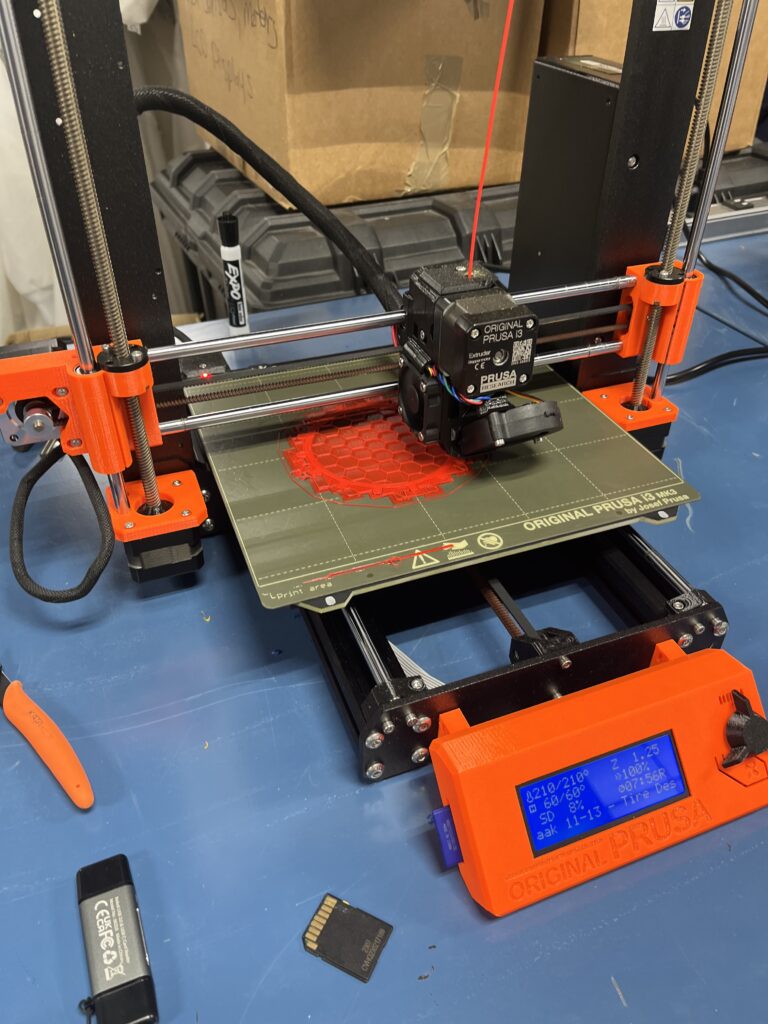
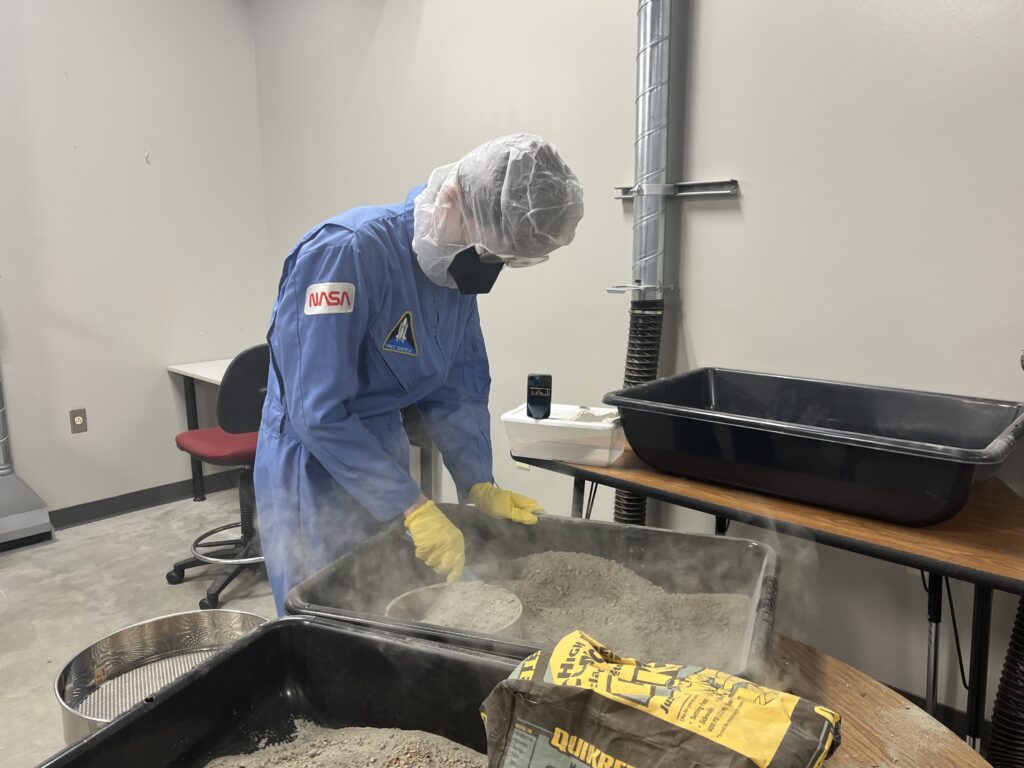
Exploring New Frontiers with the Rocketry Club
CASA extends beyond the classroom through the CASA Rocketry Club, which offers students additional opportunities to explore their passion for engineering and space. This year, the club is working on a dual challenge: building a rocket capable of reaching 790 feet while safely protecting an egg during launch and landing. These extracurricular activities deepen students’ understanding of physics and engineering while encouraging teamwork and innovation.
Preparing for Liftoff
The CASA program at CACC exemplifies the power of combining hands-on learning with real-world challenges. Students are not only building prototypes but also fostering critical thinking, collaboration, and technical skills that will serve them in future careers. CASA’s innovative approach inspires students to dream big, take risks, and tackle the challenges of tomorrow.
Programs like CASA showcase the incredible potential of integrating technology and engineering into education. With the support of the Columbia Area Career Center and NASA’s HUNCH program, CASA students are proving that the sky is not the limit—it’s just the beginning.
